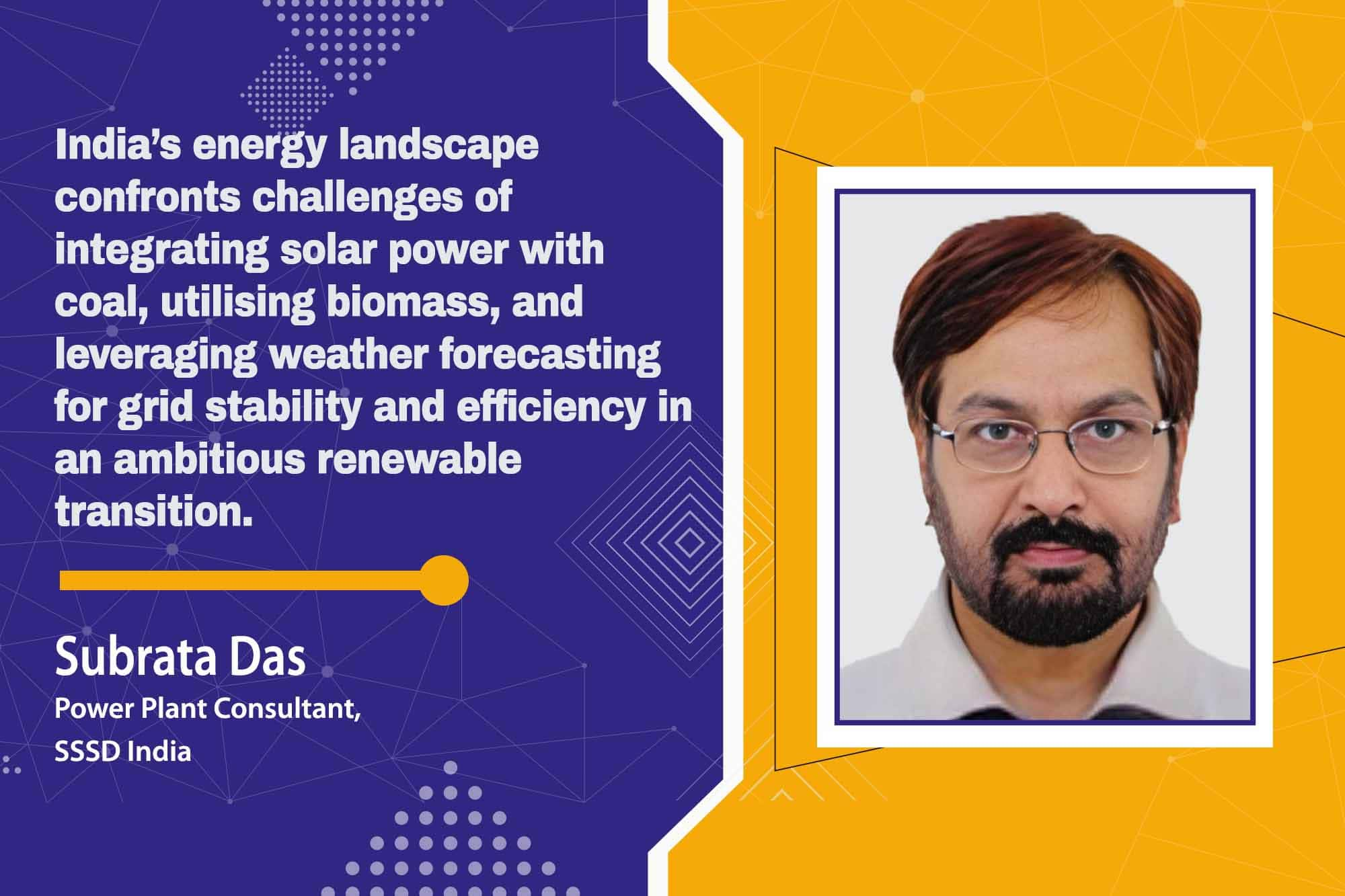Integrating RE and conventional sources is a challenge
By EPR Magazine Editorial May 25, 2024 12:34 pm IST
By EPR Magazine Editorial May 25, 2024 12:34 pm IST

India’s energy landscape confronts challenges of integrating solar power with coal, utilising biomass, and leveraging weather forecasting for grid stability and efficiency in an ambitious renewable transition.
Subrata Das delves into the intricate challenges of balancing solar and coal power in the Indian energy landscape. In an in-depth interaction with EPR Magazine, he explores operational hurdles, the integration of biomass as a supplementary fuel, and the critical role of weather forecasting in achieving grid stability. His insights shed light on the future of renewable energy integration in India.
The rise of solar power is transforming the energy landscape, posing both opportunities and challenges in balancing renewable energy with conventional coal-based power stations. Historically, solar power was expensive and unreliable due to its intermittent nature, which is available only during the day. This intermittency results in a plant load factor of around 20 percent, meaning solar power alone cannot maintain grid stability.
To address this, solar power must be complemented by conventional power plants, such as coal-based stations that can operate continuously. This requires conventional plants to be highly flexible, ramping down during the day when solar power is abundant and ramping up at night. However, this operational flexibility is particularly challenging for large, subcritical units with drum-type boilers that struggle to adjust their output efficiently.
One significant consequence of this dynamic operation is increased auxiliary power consumption. Conventional plants, running mostly at part load, consume more auxiliary power and rarely operate at their design efficiency. This inefficiency not only increases operational costs but also impacts overall plant performance.
The Indian government has mandated that coal plants blend 10 percent biomass with coal. Organisations like NTPC have successfully implemented this, replacing fossil fuel with biomass. While environmentally beneficial, this introduces commercial challenges. Running plants at partial load and fluctuating levels complicates the economics, especially considering the cost of biomass pellets.
The Indian government aims for a substantial increase in renewable energy, targeting a 50-50 renewable-conventional energy mix by 2030. This ambitious goal necessitates innovative solutions for balancing the grid. One promising approach is the use of biomass in its natural form. Burning unprocessed biomass, as practised by several small power plants in Punjab and Haryana, offers a cost-effective solution, attracting private investment due to lower fuel costs.The power sector, which has matured over the past six decades, must adopt advanced strategies to navigate these complexities. One such strategy involves leveraging weather forecasts for better planning. By receiving daily weather reports, power plants can predict the amount of solar energy available and adjust the output of conventional plants accordingly. This helps determine the load at which conventional plants should operate.
Further, plants can optimise operations by forecasting ambient temperature, rainfall, and humidity. For instance, if a plant is given a target load of 60 percent it can plan maintenance activities and manage auxiliary equipment like draft fans and boiler feed pumps to ensure efficient operation at part load. Effective grid management thus requires collaboration with meteorological departments to integrate weather forecasts into operational planning.
In conclusion, balancing renewable and conventional energy is a dynamic and complex challenge. Solutions lie in enhancing the flexibility of conventional power plants, integrating biomass, and utilising weather forecasts for precise planning. By adopting these measures, the power sector can achieve a more sustainable and efficient energy mix, supporting ambitious renewable energy goals set by the government.
Authored by: Subrata Das, Power Plant Consultant, SSSD India
We use cookies to personalize your experience. By continuing to visit this website you agree to our Terms & Conditions, Privacy Policy and Cookie Policy.